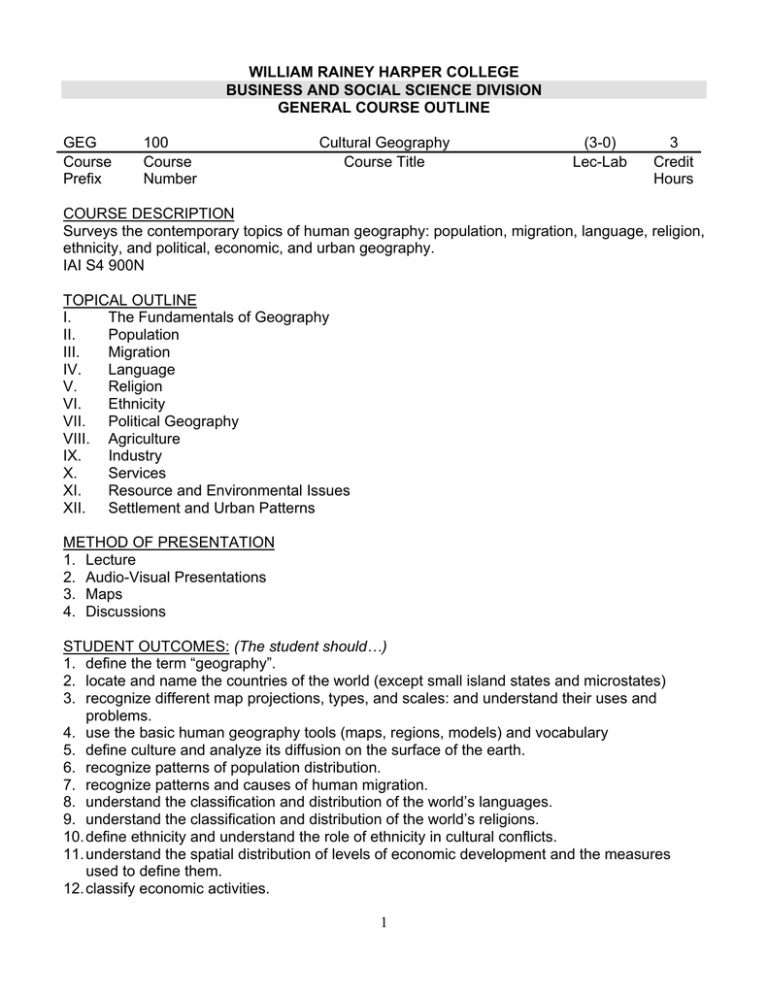GEG 100 Cultural Geography
advertisement

WILLIAM RAINEY HARPER COLLEGE BUSINESS AND SOCIAL SCIENCE DIVISION GENERAL COURSE OUTLINE GEG Course Prefix 100 Course Number Cultural Geography Course Title (3-0) Lec-Lab 3 Credit Hours COURSE DESCRIPTION Surveys the contemporary topics of human geography: population, migration, language, religion, ethnicity, and political, economic, and urban geography. IAI S4 900N TOPICAL OUTLINE I. The Fundamentals of Geography II. Population III. Migration IV. Language V. Religion VI. Ethnicity VII. Political Geography VIII. Agriculture IX. Industry X. Services XI. Resource and Environmental Issues XII. Settlement and Urban Patterns METHOD OF PRESENTATION 1. Lecture 2. Audio-Visual Presentations 3. Maps 4. Discussions STUDENT OUTCOMES: (The student should…) 1. define the term “geography”. 2. locate and name the countries of the world (except small island states and microstates) 3. recognize different map projections, types, and scales: and understand their uses and problems. 4. use the basic human geography tools (maps, regions, models) and vocabulary 5. define culture and analyze its diffusion on the surface of the earth. 6. recognize patterns of population distribution. 7. recognize patterns and causes of human migration. 8. understand the classification and distribution of the world’s languages. 9. understand the classification and distribution of the world’s religions. 10. define ethnicity and understand the role of ethnicity in cultural conflicts. 11. understand the spatial distribution of levels of economic development and the measures used to define them. 12. classify economic activities. 1 13. understand the classification and distribution of the world’s agricultural regions. 14. recognize the role of locational decisions in the distribution of manufacturing activities. 15. explain the distribution of central places. 16. contrast the concepts of “states, “nation”, “nation-state”, and “multi-national state”. 17. understand the issues connected with defining and defending state boundaries. 18. understand urban structure models and their uses. METHOD OF EVALUATION 1. Multiple choice and/or essay quizzes and exams. 2. Map quizzes. 3. Written reports/problem sets/assignments. 4. Final exam. TEXTBOOK Rubenstein, The Cultural Landscape: An Introduction to Human Geography, 9e, 2008, Prentice Hall. Know, Human Geography: Places and Regions in a Global Context, 5e, Prentice Hall, 2009 Prepared by: Veronica Mormino Fall 2010 2





